
Today’s Guest Blog authored by the Official Dietitian of #TeamOrdinary, Allison Knott, MS, RDN, CSSD of Anew Well Nutrition. Helpful reference for this article: The Everyday Athlete Pantry List
Being an athlete means sticking to schedules and training plans while having a keen awareness for how the food on your plate impacts your performance. But just because you know it’s important doesn’t make it any less intimidating. Athletes aren’t immune to the stress that comes with grocery shopping. Take the confusion out of your next shopping trip with these tips and pantry list for the everyday athlete.
Produce
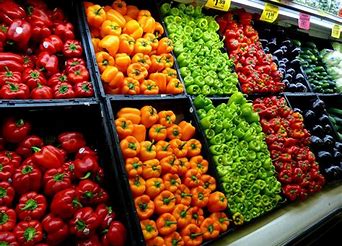
Think of this group as playing a primary role in helping you perform at your best. Fruits and vegetables provide a variety of essential nutrients that play a role in recovery and immune support. Plus, eating a diet rich in fruits and vegetables can contribute to optimal hydration with up to 20 percent of total water intake coming from plants. Plants are also a source of potassium which is necessary for fluid balance and blood pressure management. Shop seasonal to increase variety while also saving cash. Aim for a combination of vegetables and fruits, but lean heavy on the vegetable side. And don’t be afraid to try something new. Make it a goal to pick up a new fruit or vegetable every time you shop.
Choose these, but know you can’t go wrong with any type of produce:
- Berries and Cherries
- Stone fruits, apples, pears,
- Citrus
- Dark leafy greens
- Starchy vegetables(i.e. potatoes, parsnips, sweet potato)
- Root vegetables (i.e. beets, carrots, radish, rutabaga, turnips)
- Garlic, leeks, onion
Grains
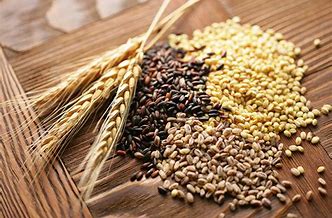
This group provides a significant source of carbohydrates and offers both high fiber and low fiber options. Higher fiber for the majority of your diet and lower fiber for those carbohydrate boosts before or even during a workout/race. Focus mostly on whole grains and aim for a minimum of 50 percent of the grains to be whole grains.
Choose these:
- Whole grain bread – look for a minimum of 3g of fiber per slice of bread and opt for the variety with the lowest sodium and added sugar. Whole grains should be the first ingredient in the ingredients list.
- Pasta – If you enjoy traditional pasta, plan to get your whole grains in the other forms of grain you eat throughout the day. Otherwise, opt for whole grain pasta where possible.
- Rice and other whole grains – Brown rice is a standard, but you can swap out for other types of whole grains like quinoa, kamut, amaranth, barley, or farro. Look for quick-cooking whole grains if you’re in a rush, but be sure to choose the type with no added sodium.
Beans and Legumes
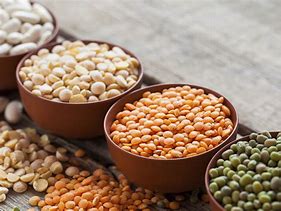
Like whole grains, this group is a significant source of carbohydrate and fiber, but with the added benefit of having protein. Beans are an ideal pantry staple and can act as both a carbohydrate and a source of protein on the plate. Beans and legumes are also a source of folate and other B vitamins as well as potassium. Choose canned for quick cooking or dry if you have extra time and/or are trying to cut back.
Choose these:
- Canned or dried beans (i.e. black beans, kidney beans, garbanzo beans)
- Lentils (dry or pre-cooked; 1 cup cooked has 18g protein)
- Peas (easy for stir-fries, casseroles and soups)
- Edamame (considered a complete protein; 1 cup cooked has 17g protein)
Protein (meats or meat alternatives)
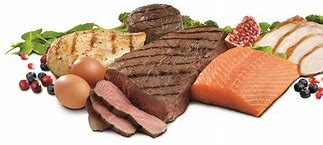
Whether you’re a vegetarian, vegan, or omnivore, protein is an essential nutrient that plays a role in muscle growth and repair. However, choosing your protein source looks much different depending on the diet you follow. For omnivores, choosing meats that are lower in saturated fat and unprocessed the majority of the time is important for long-term health. For vegetarians and vegans, be sure to pick up a variety of plant-based sources of protein to ensure that you’re getting all of the essential amino acids. This means eating a mix of plant-based sources of protein throughout the day.
Choose these:
- Low-saturated meats like chicken, turkey, fish, and lean beef. Limit or avoid processed meats like bacon, sausage, and cured deli meats.
- Tofu/Tempeh/Seitan: many of the meat alternatives have a long shelf-life if kept in the fridge which makes them a great pantry staple for quick meals. Be sure to check the ingredient label and avoid the varieties that are higher in sodium.
- Plant-based burgers/brats/nuggets: Check the saturated fat and sodium. Choose an entrée meat alternative with at least 10 grams of protein and/or plan to get the protein elsewhere in the meal.
Dairy and Non-Dairy Milks, Yogurt, Cheese

Like meats and meat alternatives, this group has something for every dietary choice or restriction, however the nutrient content varies widely. If you’re buying dairy milk, yogurt, or cheese, opt for the lower saturated fat varieties if you also have saturated fat from other sources. Think of saturated fat as a bank account – you decide where you want to spend it! (Note: most people should aim for no more than 10% of calories from saturated fat or about 22g per day if eating a 2000 calorie per day diet.) For non-dairy alternatives, check the protein, calcium, and vitamin D as it can be significantly different from dairy milk. Non-dairy milks can also contain saturated fat (read: coconut milk), so be sure to take that into consideration as well.
Choose these:
- Yogurts: greek, skyr, kiefer
- Milks: dairy or non-dairy of choice (avoid varieties with added sugar)
- Cheese
Oils / Fats
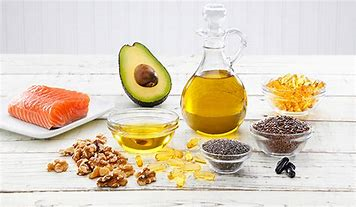
Dietary fats include unsaturated, saturated, and trans fats. Saturated fats are mostly found in animal products like butter, cream, cheese, and high fat meats. They’re also in tropical plant oils including coconut and palm oil. Unsaturated fats are found in nuts, seeds, fish, and the majority of plant oils. Fat is used for energy, nutrient transport, and for protecting organs. Replace saturated fats with unsaturated fats where possible and avoid replacing dietary fat with refined carbohydrates.
Choose these:
- Plant oils (i.e. olive oil, avocado oil, soybean oil, flaxseed oil)
- Nuts and seeds (i.e. pumpkin seeds, hemp hearts, walnuts, almonds, pistachios, pecans, sunflower seeds, peanuts, ground flaxseed, chia seeds)
- Spreads (i.e. almond butter, peanut butter, cashew butter, pumpkin seed butter)

I believe that avoiding highly processed foods may be the first step to lose weight. They will taste beneficial, but packaged foods currently have very little vitamins and minerals, making you take in more just to have enough vigor to get through the day. When you are constantly eating these foods, transferring to grain and other complex carbohydrates will help you have more electricity while taking in less. Thanks alot : ) for your blog post.